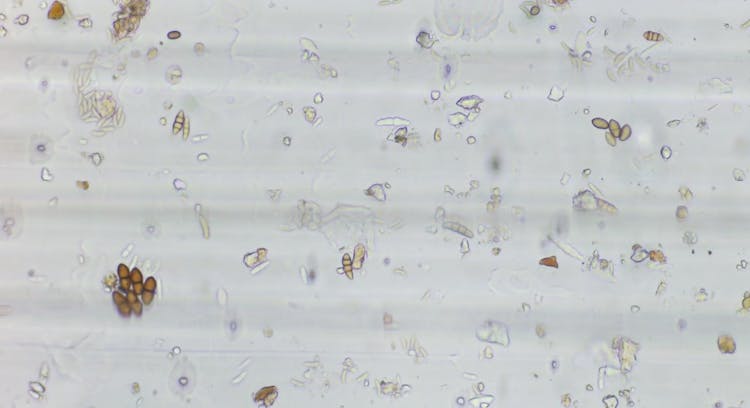Pathology|7 Aug 2024
Guide to Spore Tracking in Australian Crops by Season
Managing crop diseases is key to keeping Australian agriculture healthy and productive.
BioScout
4 Min ReadManaging crop diseases is key to keeping Australian agriculture healthy and productive. One of the best ways to tackle fungal diseases is through spore tracking, which involves monitoring and identifying fungal spores that can harm crops.
This guide dives into spore tracking and highlights why it’s essential across different seasons. Effective spore tracking can cut down on crop losses and contribute to Australia's $60 billion agriculture industry. By understanding and applying seasonal spore tracking strategies, farmers can protect their crops, make better use of resources and maintain sustainable farming practices.
BioScout’s Next-Gen Spore Tracking Technology
Spore tracking helps detect and monitor airborne fungal disease spores that threaten crop yield. By identifying spores early, sometimes weeks before the disease can be seen with the naked eye, growers can act quickly with precise timing of sprays to prevent or reduce the impact of diseases.
Australia's vast agriculture industry is a huge part of the economy. However, crop diseases, especially those caused by fungal pathogens, can lead to significant losses. For example, fungal diseases cost the Australian grain industry around $1 billion annually. Effective spore tracking can help cut these losses by providing early warnings and enabling precise disease management strategies.
Seasonal Variations in Spore Tracking
The effectiveness and focus of spore tracking can vary significantly depending on the season. Each season presents unique challenges and opportunities for managing crop health.
Spring: Preparing for Growth
Spring is an important time for spore tracking as many crops begin to grow, and the weather conditions favour the spread of fungal spores.
- Monitor weather conditions: Increased rainfall and humidity in spring create ideal conditions for fungal spores to thrive.
- Early detection: BioScout acts as your eye when spores are hard to see at the microscopic level. Being vigilant spore traps early in the season can detect the presence of spores before they cause visible damage. Early detection allows farmers to act swiftly, reducing the risk of widespread infections and ensuring healthier crop growth throughout the season with well-timed sprays.
- Preventive measures: Based on spore data, farmers can apply fungicides preventively to protect young plants from potential infections. By targeting treatments precisely when and where they are needed, farmers can avoid unnecessary applications, reduce costs and minimise the environmental impact of unnecessary sprays.
Summer: Managing Heat and Humidity
Summer in Australia brings a mix of hot, dry conditions in some regions and high humidity in others. These varying climates can significantly influence the types and quantities of fungal spores in the air, making spore tracking essential for effective crop management.
To effectively manage these threats, consider the following strategies:
- Constant monitoring of dashboard: Different fungal diseases release spores under different climatic conditions, daily monitoring will ensure spore thresholds are understood leaving room for timely action plans.
- Targeted treatments: Use spore data to apply fungicides at times when the spore loads are high. This precision reduces unnecessary chemical use, improves crop yields and prevention of chemical resistance, promoting more sustainable farming practices.
- Post-harvest management: Maintain field hygiene to minimise the chances of overwintering spores.
Winter: Reducing Overwintering Spores
Winter varies widely from region to region, with some experiencing cold and wet conditions while others remain relatively mild.
Key strategies for winter spore management include:
- Identifying hotspots: Utilise spore data to pinpoint areas where spores are likely to overwinter. By identifying these hotspots, farmers can take targeted actions to mitigate the risk of spore survival.
- Field hygiene: During winter, it's crucial to clean up crop residues and other organic matter that can harbour overwintering spores. This helps to eliminate potential sources of infection before they can impact new growth.
- Preparing for spring: Winter spore data is invaluable for planning spring planting. By understanding the spore levels and types present, farmers can ensure their fields/orchards, vineyards etc are prepared and ready for the upcoming season.
Implementing the BioScout Spore Tracking Technologies
BioScout’s spore tracking technology provides advanced tools for monitoring and managing fungal spores. They include:
- Automated spore traps: Devices that continuously collect and identify spores, providing real-time data to farmers.
- Weather integration: Combining spore data with weather information to create a comprehensive picture of disease risks.
- Data dashboards: Our user-friendly platform that delivers spore and weather data directly to growers’ desktops, enabling informed decision-making.
Spore tracking is an essential practice for Australian farmers to manage crop diseases effectively. By understanding seasonal variations and using our advanced technology, growers can protect their crops, reduce losses and ensure sustainable agricultural practices.
To know more about the BioScout technology, get in touch with the team.


